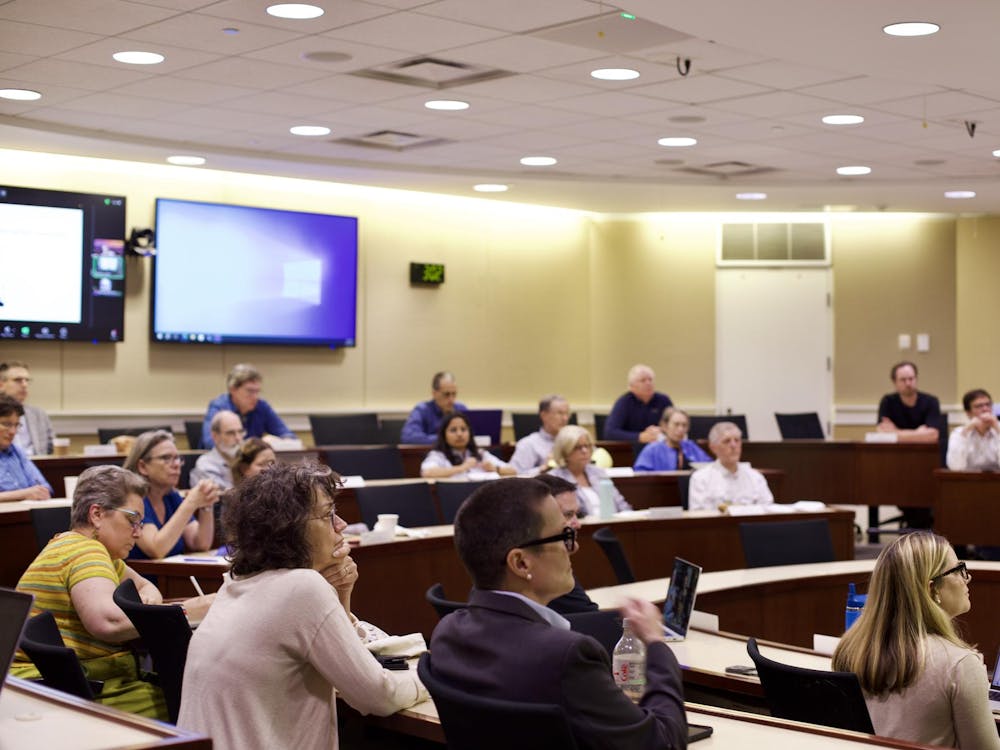With the University shut down this spring, 8,420 admitted students will have to decide by May 1 whether to join the University’s Class of 2024 likely without stepping foot on Grounds. However, like classes, the University’s community and campus have been transformed into a virtual experience.
Dean of Admission Greg Roberts has led the charge of converting spring events, such as Days on the Lawn — an event for admitted students to tour Grounds and experience the University community in person — into accessible online resources as the country practices social distancing. In 2018, 60 percent of admitted students attended Days on the Lawn.
“We are offering a host of virtual programs and events designed to replicate key elements of our on-Grounds open house programs including faculty and students panels and virtual tours to give students a glimpse of the U.Va. culture, community and academic and social options,” Roberts said in an email to The Cavalier Daily.
The University hopes to post a calendar of these events on its website this week.
Roberts says the Office of Admission has received support from a variety of people, including current students, faculty and alumni.
“We have received a groundswell of support from U.Va. students, alumni, faculty and staff who are eager to assist us and connect with admitted students,” Roberts said. “Some alumni clubs are sending personalized postcards and packets to admitted students in their area as well.”
The University Guide Service — which provides admissions and historical tours — is one student group seeking to attract prospective students. Liam Zeya, U-Guides chair and a fourth-year College student, said that his organization wants to connect with admitted students in three different ways — through virtual tours, TikTok posts and Zoom sessions.
“One of our overall guiding principles … is just being honest,” Zeya said. “Doing these things [virtual interactions] will hopefully bring home that message.”
The honesty has paid off, as Zeya notes that the number of virtual tour website visits has increased 400 percent and their most viewed TikTok has been watched by 23,000 viewers.
One admitted student that has viewed U-Guides’ online services is Minerva Martinez-Acosta, a senior at Bishop O’Connell High School in Arlington, Va. She says that although she wishes she could experience the University in person this spring, she thinks that the effort of the University and U-Guides to connect with her shows the type of community that the University offers.
“It's a way to humanize people showing they are people too and they are going through the same things,” Martinez-Acosta said. “They're stuck at home ... [and] are expressing how supportive they are on TikTok, but also having a certain amount of enthusiasm too — which shows a lot because the fact that you can go through such difficult times and still have enthusiasm towards U.Va. and just love it so much from far away, I think that says a lot.”
Although U-Guides has successfully connected to students like Martinez-Acosta through online services, Zeya is aware of the platforms’ shortcomings since U-Guides relies on students having access to the internet.
“I think that's an issue that the University as a whole is working through right now about how to best stay in touch with students,” Zeya said. “You're not going to have an equal opportunity among all students to be able to participate in those, and I think there are definitely limitations to what we can do stemming from that issue.”
Martinez-Acosta agrees there are limitations because although she believes the University is doing well to connect with her, she wishes she could have witnessed the on-Grounds experience in person this spring.
“You can do Zoom conferences, TikToks or anything else but nothing will compare to actually being there and seeing where you’re going to spend the next four years of your life,” Martinez-Acosta said. “When you visit you really get a feel for the energy that people have and you get a glimpse into how people live their lives. Not being able to visit deprives us [prospective students] of that.”
Roberts also recognizes that not all admitted students will have internet access, so organizations are working to find alternative ways to contact prospective students through partnerships with community based organizations, the Virginia College Advising Corp, the Virginia Alumni Admission network, University Alumni Clubs and the University’s student admission ambassadors.
“The lack of internet access in some areas and with some students is a concern,” Roberts said. “We are also working through organizations who support underserved students … to connect with students and families, and we are calling as many admitted students as we can.”
Roberts is also concerned about the yield rate for the Class of 2024 because even though the virtual experience gives prospective students a glimpse at the University, it does not compare to in-person immersion. The University’s enrollment goal for the Class of 2024 is 3,750 students, meaning the University hopes 44.5 percent of admitted students accept their offers of admission.
“Visiting is the best way to get to know U.Va. and since students cannot visit, we hope our online/virtual opportunities and the personal outreach through phone calling will give admitted students a glimpse of our supportive and diverse community, culture and opportunities,” Roberts said.







